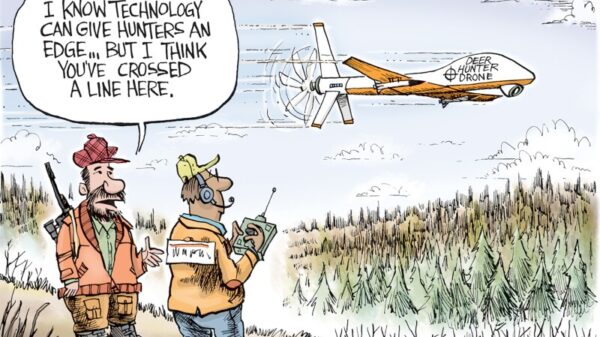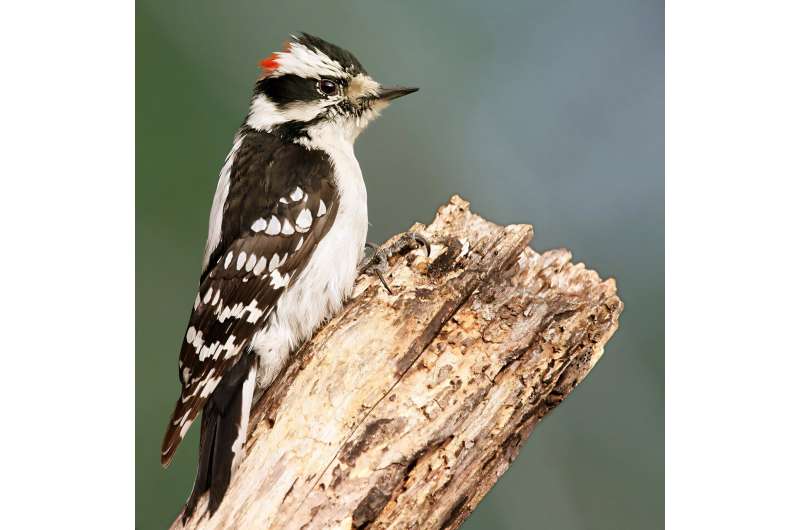Research published in the Journal of Experimental Biology reveals that woodpeckers utilize their bodies like hammers to maximize drilling power. A team of researchers from Brown University and the University of Münster discovered that these birds brace their muscles and synchronize their breathing to enhance their strength while pounding on wood.
Woodpeckers can experience decelerations of up to 400g when they drill. To study this remarkable ability, researchers captured eight wild downy woodpeckers, filming their drilling techniques over three days. The team measured electrical signals in various muscle groups while observing their methods of tapping on hardwood. This comprehensive approach provided insight into how specific muscles contribute to their unique drilling technique.
The team identified that the hip flexor and front neck muscles play crucial roles in propelling the birds forward as they strike wood. According to Nicholas Antonson, a member of the research team, “At the same time, other muscles appear to play supportive roles.” Woodpeckers tilt their heads back and engage multiple muscles located at the base of the skull and neck to brace themselves during impacts. Additionally, they stabilize their bodies with abdominal muscles and flex their tail muscles to anchor against the tree.
Fine-Tuning Impacts and Breathing Patterns
The study highlights that woodpeckers are not merely one-hit wonders; they adjust the force of their impacts based on the type of drilling. The researchers found that the hip flexor muscle contracts more powerfully during harder drilling, while easing off for softer taps, indicating a remarkable level of control.
Interestingly, the birds also synchronize their breathing with each impact. The team noted that woodpeckers exhale forcefully, similar to athletes grunting during strenuous activity, at the moment their beaks strike wood. This breathing pattern enhances the co-contraction of trunk muscles, effectively boosting the power of each blow.
The synchronization is particularly notable when woodpeckers tap at rates of up to 13 strikes per second, taking quick breaths between each impact. This level of coordination demonstrates the complexity of their drilling mechanics and further emphasizes the physical adaptations that allow them to excel in this unique behavior.
Conclusion
The findings from this research provide deeper insight into the biomechanics of woodpeckers and their exceptional drilling capabilities. By turning their bodies into hammers and coordinating their movements with intense breathing, these birds effectively maximize their drilling power. The study contributes to the broader understanding of avian physiology and behavior, showcasing how animals adapt their physical attributes for survival.
For more details, refer to the article “Neuromuscular coordination of movement and breathing forges a hammer-like mechanism for woodpecker drilling” in the Journal of Experimental Biology, published on November 6, 2025.






































































